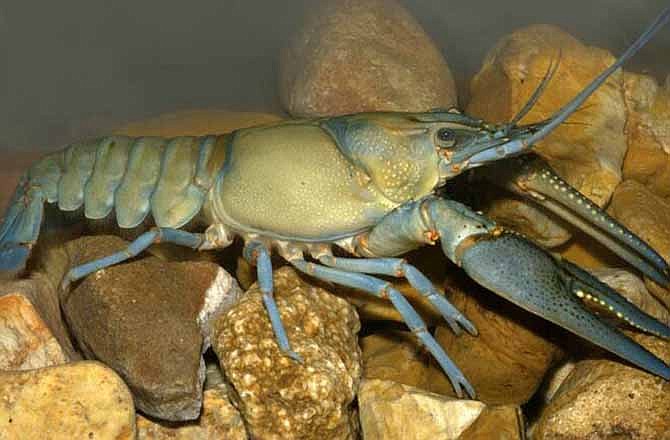Missouri fish farmers and bait shops are asking the state Department of Conservation to reconsider a ban on selling live crawfish that goes into effect Sept. 1.
Conservation officials said the ban is necessary to stop the spread of nonnative varieties of the crustacean, also known as crayfish and crawdads that could crowd out native species and spread diseases that endanger entire ecosystems.
But fish farmers, backed by the Missouri Aquaculture Association and Missouri Farm Bureau, said the ban will hit them hard economically and isn't needed.
Larry Cleveland, owner of Ozark Fisheries near Stoutland in southern Missouri, estimated the ban will cost him between $15,000 and $25,000, though he will still be able to sell crawfish outside of the state.
He said the hidden costs will come from the loss of small bait dealers who do up to one-third of their sales in crawfish. The ones that close won't be buying other things like goldfish and koi, which Cleveland also sells, and won't be paying tax revenue to the state.
The statewide impact is "going to be at least half a million dollars," he said. "You take that away, you're going to put a few people out of business. That's a fact."
The ban first was intended to go into effect March 1, but after an outcry following the announcement of the new regulations, the Conservation Department pushed implementation back until Sept. 1.
The state currently allows four species of crawfish, all native to Missouri, to be sold as live bait. Opponents of the ban said that law should be good enough, if enforced, to keep invasive species out of the state's waterways.
"We don't understand why, if we have these native crayfish already in our lakes, ponds and streams, why wouldn't we be able to market them like we have for decades and decades," said Marvin Emerson, who with his brother, David, owns Crystal Lakes Fisheries in Ava.
Joe Jerek, a spokesman for the Department of Conservation, said that while all four species of crawfish currently allowed to be sold in the state are native to Missouri, none of them is native to every part of the state.
"The essence of it is that crayfish, which may even be native to Missouri, can still be invasive," Jerek said. "The species that are native to Missouri still have limited geographic areas, so if they are moved to other areas where they're not naturally found, they become invasive."
He said careless bait shops and anglers are partly to blame for needing the new regulations. It's illegal to dump live bait into the water, for instance, but many people do, anyway. And a survey of bait shops across the state found that many did not know what species they were selling to customers, he said.
There have been several instances of nonnative species of crawfish showing up in Missouri waters, Jerek said, and the new rules are needed to stop their spread.
"Even though these are relatively small animals, they do have the potential to have a very large impact on an entire ecosystem," Jerek said. "What they can tend to do is displace the other native species of crayfish. And then there always is the potential to introduce new parasites or new diseases."
The Missouri Farm Bureau has started a petition drive to persuade the Conservation Department to rescind the ban. In addition to hurting fish farms and bait shops, the group said, the ban also will hurt anglers who use crawfish to catch bass and catfish.
Farm Bureau president Blake Hurst said his organization got involved because many of its members would be hurt by the ban, and because the state didn't follow the proper procedures when creating it.
"It's important because we have members affected as fishermen and bait salesmen," Hurst said. "It's also important because you've got to play by the rules. If we allow government agencies to circumvent those rules, things will be worse. It's bad for the precedent it sets."
Emerson, who said his family's trout farm wouldn't be directly hurt by the ban, said he has spoken out against the restrictions because many of the Aquaculture Association's members would suffer because of it. He also said many people are upset with the way the Conservation Department broke the news of the ban to members.
"We had a meeting the second week in January where a representative from the Missouri Department of Conservation said they had implemented a rule that you can't sell crayfish for bait anymore. Everybody's mouths just dropped."
The conservation official told the association that letters had previously been sent out announcing the change, and there had been a public comment period that drew little response. But nobody at the meeting had either received a letter or been informed about the public input period, Emerson said.
"In this case, it's not only about overreaching and overregulating," Hurst said. "One of the things that's important when you promulgate a rule, you give citizens a chance to comment. They didn't publicize this change. Those most directly affected weren't aware of it."

